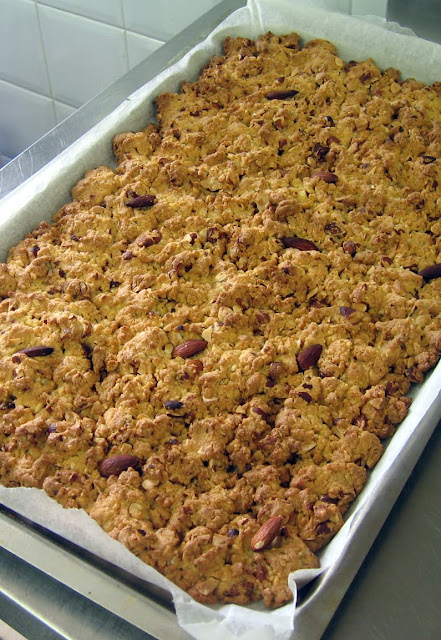Intense, explosive flavors and imaginative fare await diners at Joel Robuchon’s newest addition to the Paris restaurant scene, L’Atelier Etoile de Joel Robuchon. Situated in the lower level of the Drugstore Publicis at the Etoile, the bright red and black space is already full of glittery Las Vegas-style drama. But the real scene is what’s on the plate and what happens to your palate with each pleasurable bite.
As we were nearly finished with our multi-course tasting lunch yesterday one of my lunch companions said in disbelief “This must be what it feels like to take LSD! The reds are more red, everything is more focused, more extreme.” I second that.
The menu offers some welcoming Robuchon classics, many dating back to the 1980’s and the early days of Jamin. But with Japanese chef Yosuke Suga in charge an entirely new line of Asian-inspired aromas and flavors share the limelight. Suga previously served as head chef at the Atelier branches in New York and Taipei, and is a member of the very tightly knit group of Robuchon chefs who travel the world to make sure each of the 10 Ateliers stay on top of the game.
The lunch served as a case study as to how old dishes can become new again. Once a dish is perfected – as only Robuchon can do – it can live on forever. His classic creation of caviar in lobster jelly, topped with cauliflower cream offers an explosion accompanying every bite, the magical grains of caviar almost suspended in the rich jelly, and the cauliflower cream serving to intensify and smooth out flavors at the same time. Served in tiny glass bowls with a clear glass lid the presentation alone would be sufficient drama.
Another specialty not to be ignored is the penetrating bite of smooth and pungent foie gras set in a dense port jelly, topped with a soothing Parmesan cream. Mouthfilling, intense, unforgettable.
Joel’s classic potato and truffle salad has been turned inside-out, and here appears as a beautiful architectural offering, with smooth curls of foie gras, paper- thin shards of toast, slim discs of truffles, thick slices of potatoes, shavings of Parmesan and just a few whispers of arugula. The textures and flavors walk arm in arm. I would have loved the dish more if the potatoes had been warm.
Chef Suga’s addition of Les Shishitots – tiny, thin-skinned Japanese peppers that are slightly sweet and barely spicy – gets a big winter welcome when any touch of greenery on the plate demands applause. It’s hard to pick a best taste of the day here, but the little peppers were pierced with wooden skewers and laced between meaty mushrooms cooked to perfection on their flat plate “plancha.” A tiny dollop of brilliant green, extra-mild wasabi mousse topped it all off. I could have easily gone for a second portion. (Photo)
But then what about the salsify ? Who knew salsify could taste so great! The theme of many of the newer dishes here seems to be a lot of rectangles and squares, and in the case of the much maligned and ignored salsify, the rectangles of the winter root vegetable are lined up side-by-side and topped with golden, crispy salsify chips.
L’Atelier Etoile de Joel Robuchon, Publicis Drugstore, 133, avenue des Champs Elysées, Paris 8. Tel : + 33 1 47 23 75 75. www.joel-robuchon.com Open daily. Lunch reservations accepted. Dinner reservations at 6:30 only. Small tastes from 14 to 65 euros. Nine-course tasting menu, 150 euros.








